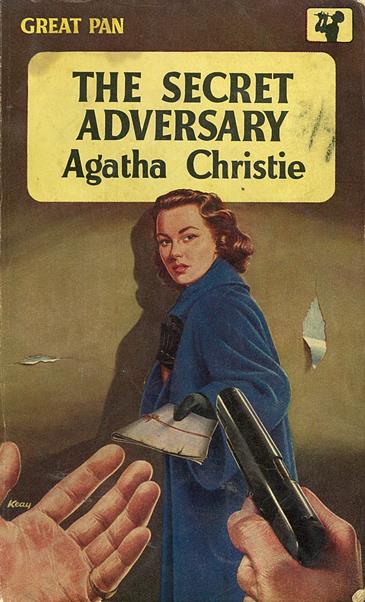And one last set of books by Agatha Christie. Last week I wrote about the same titles published in the late 1950s and early 1960s:
A Pocket Full of Rye (1976)
A sick joke brought the sharp-tongued Miss Marple to the Fortesque home...Sergeant Hay looked up at Inspector Neele from the bottom of the stairs. He was panting.
"Sir," he said urgently. "We've found her!"
"Found who?"
"Gladys, Sir, the maid. Strangled, she was, with a stocking around her throat—been dead for hours, I'd say. And sir, it's a wicked kind of joke—there was a clothes peg clipped on her nose..."
Peril at End House (1977)
Accident Number One: the heavy picture that falls across Miss Buckley's bed
Accident Number Two: the boulder that thunders past her on the cliff path
Accident Number Three: the car brakes that fail on a steep hill
Accident Number Four: the bullet that misses her head by inches
But the would-be murderer makes a grave mistake—he shoots at his victim while she is talking with Hercule Poirot!
The Labours of Hercules (1980)
A modern 'Labours of Hercules'...... And what a contrast! The earlier editions of these books depict realistic, but rather generic Young Women in Peril on their covers. These paperbacks are adorned with slightly surrealistic and very symbolic art. And yes, the symbolism does tie in very neatly with the plots of the books.
The idea appeals to Hercule Poirot's vanity. Before he retires to grow superb vegetable marrows he will undertake just twelve more carefully chosen cases.All of them will resemble the remarkable feats of strength performed by that brawny hero of ancient Greece, the first Hercules. But when the fastidious Hercule Poirot faces his modern monsters, his only weapon will be his brilliant powers of deduction...
The cover paintings on the later books were done by Tom Adams—an illustrator best known for the Agatha Christie covers he did for Fontana and for Pocket Books in America. They were gathered together in a book (Tom Adams' Agatha Christie Cover Story published by Paper Tiger in 1981). I'll admit to a soft spot for these covers; not only are they visually intriguing, but I first read Agatha Christie in these editions when I discovered the author as a teenager!





















